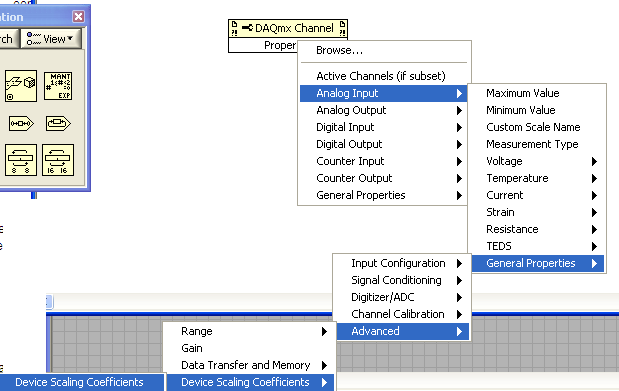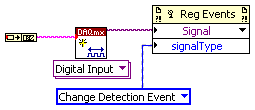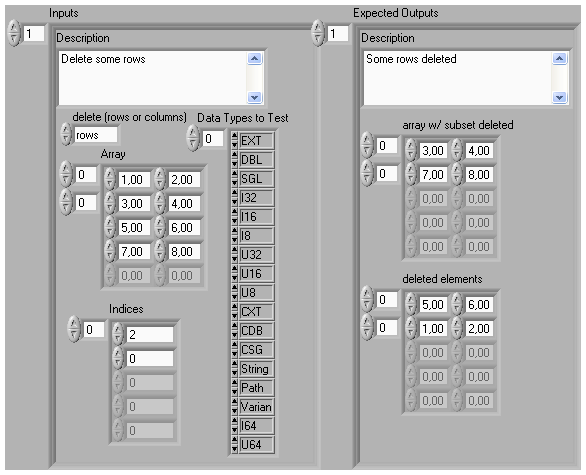
LAVA 1.0 Content
-
Posts
2,739 -
Joined
-
Last visited
-
Days Won
1
Content Type
Profiles
Forums
Downloads
Gallery
Posts posted by LAVA 1.0 Content
-
-
Stay tuned.
Ton
-
Hi all,
I think that it is quite unclear on how to start a new thread for novice users.
This should be made more easier (consider how Stackoverflow directly let you ask a question, or how twitter only asks you to specify the message to broadcast).
On LAVA you have to hit the 'Forums' button and then select the forum to post into, followed by the quite small 'Post a new thread' option), even I find this cumbersome.
The reason I bring this up is the following:
Two days ago I receive a PM from a new member, asking some detailed question.
I reply and say I consider this SPAM and advice him/here to post a 'new thread' on LAVA.
The next day I receive another PM with 'new thread' as the title.
Then my mind kicked in.
I am online a lot of times, I have a lot of posts. My name might be one of the first links to hit, followed by the 'PM me' function.
So I think new members 'just don't get it'.
Maybe an 'Ask a question' or 'Start new Thread' next to the Guidelines is a good way.
Ton
-
There is difference where DAQmx gets the 'raw' data from, it should be mentioned in the help for that function. But the I16 output is not the raw data for an E device (it is different for an M device), to go from I16 to float you should get an array from the 'Device Scaling Coefficients' that returns per channel the polynomial components for conversion from I16 to engineering units.
Ton
-
-
The solution is quite easy, you make a normal probe and display the current time when the probe is executed.
The problem is that I think that probes are not time critical for the LabVIEW compiler and parallel processes might continue to run while the probe evaluates, so I would keep the probe as simple as possible.
Ton
-
There are several options:
- INI-Files
For this type I recommend the OpenG Variant Config tools, it allows you to easily read and write random data to a file in a human readible form - XML-Files
For this type I recommend the JKI XML Toolkit, it behaves like the OpenG Variant Config tools. - Plain binary data
You can use the binary read/write functions to store the data directly to disk, disadvantage is that if you change your datatype your files will be useless, and you cannot edit the data with an other editor
There are other options as well, I usually use the OpenG or JKI routes.
Ton
- INI-Files
-
-
QUOTE (ragu @ May 20 2009, 01:42 PM)
It is part of the OpenG Array Toolkit, installable with VIPM
Ton
-
-
-
The property Top Left Visible Cell will deal with that. You define which cell is at the first position.
Ton
-
If I wish to use array to store data & take the data out to be used?
-
Here is an 8.0 version (haven't tested it).
The code looks messy but should be OK.
Ton
-
It seems that this bug is resolved by Commit #758 by Dafemac, and is covered by Unit Test #
1:I am changing it's state to 'Closed'
Ton
-
QUOTE (Norm @ May 15 2009, 10:16 PM)
Hi all!This time, I'd like to do it right. Somehow the code needs to select the correct parsing routine by header and verify the string using the checksum.
Does the data always start with the header?
Is the header always the same size?
If both answers are true your code is quite easy: Read the header and use that as the selector for a case structure, for every possible header you have a different case that reads the correct amount of bytes.
QUOTE
I do understand that to calculate the checksum, I've got to go (input) string to byte array and loop with an XOR to get the number. Not sure how to implement that solution, though.Microwave Dave posted some code, unfortunately it's inLV8.6 (I'm usingLV8.0), which I don't have.I think there are several checksum VIs available, where is Microwave Dave's post?
QUOTE
BTW: This endgame for this code is logging visible satellites by time along with their c/no, az, el and satellite health. I'm thinking 32 individual .txt files would probably be the way to go. Each file can be imported into excel and sorted that way.Any ideas here? I'd like to log the data by day (0000-2400utc).I advise you to use TDMS or TDM data, this can be opened by excel with a plugin but makes sure that the data is correct, you will lose no significance data.
QUOTE
Offer of dinner: If you are local to Binghamton, NY (within 100 miles) I'll spring for dinner in exchange for being able to pick your brain aboutLVand writing code..Maybe a donation to LAVA is a good idea to keep things running!
Ton (or if you come to the Netherlands we could have dinner)
-
The only thing limited on the pushOK interface is that you always get a 'Action Succeeded Dialog' that you have to 'OK'.
Besides PushOK there are other gateways, TamTam for $10 or another one for €70 whose name I can't remember, haven't tested them, I was pleased with PushOK enough.
Remember you will need a full-blown client (like Tortoise) for tagging and branching.
Ton
-
I would advise you to use the OpenG lvzip toolkit it features an installer and is tested on all LabVIEW development OS's and targets.
It includes compressing and decompressing, listing and many other features linked to zip functionality.
Ton
-
-
sorry, 1 last question. if i wish for the next message to appear on a new line, is it possible?
-
The G-toolbox by Georghe Zhou provides an interface for this (on Windows).
Ton
-
QUOTE (huotom @ May 14 2009, 07:33 AM)
I don't think that NI would enclose this feature for a long time unless there is a huge evolution or a big challenge.They most likely will adept, one of the recent Stackoverflow podcast discussed this, the comment of Joel Spolsky was that any commercial product that had successfull open source extensions/plugins they will be embraced and implemente as a feature by the owner.
Ton
-
-
QUOTE (huotom @ May 14 2009, 04:44 AM)
I wonder that LabVIEW should include in some features VB & C# having, just like the properties page.I HATE hit the right mouse while i want to change the properties of Contols or Indicators on the FP.
I have a challenge.
It would be quite easy to get started on this, but you can build such a VI.
You can get the actual selected controls from a VI (to have an idea the CCT API has such code)
So for any of the major datatypes with a lot of controls (numeric/string/path) you could write a set of properties you wish to access, now with a little floating VI you can interact with the selected control.
The best thing about this, is that when you do this just enough to get the downloads spinning, NI will realize this is a very usefull feature and they will implement it really good and much better than any of us could ever do.
Ton
-
Thanks santi122. i tested it & it is working. Many Thanks




SCRIPTING IS AVAILABLE
in VI Scripting
Posted
QUOTE (Aristos Queue @ May 29 2009, 06:50 PM)
OK AQ the guidelines of LAVA clearly state that 'CAPS ONLY' is forbidden, for once we let it pass through.
Now it is so wonderful, every Q ever asked can be replied with 'scripting will help you', 'let the LabVIEW API guide you', 'You could write a script that writes the code you need'.
Ton